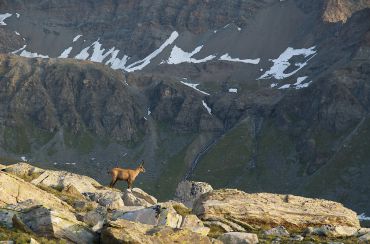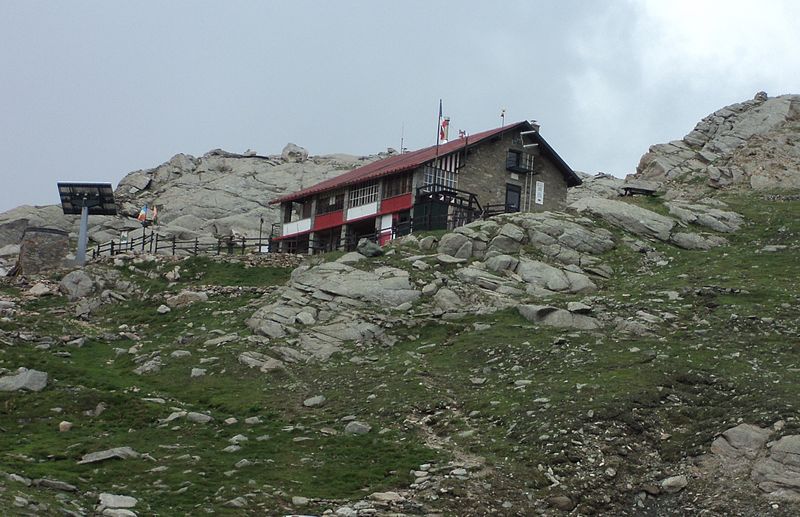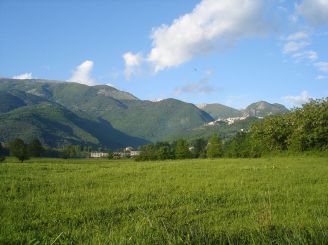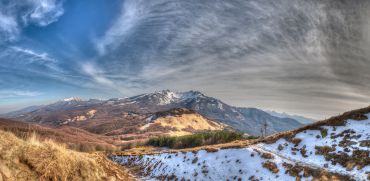Gran Paradiso National Park, Piedmont

Gran Paradiso National Park (Parco Nazionale Gran Paradiso) is the oldest national park in Italy, and also one of the largest. Its territory covers 2 regions – Piedmont and Valle d'Aosta. It lies on the boundless alpine expanses, among mountains, valleys, meadows and forests. Its name, in translation from Italian – "big paradise", fully justifies itself. And this place has become a real paradise for many animals, including the symbol of the park – Alpine mountain goat.
History of the Gran Paradiso National Park
Mountain goat. It all began with this animal, which is also the symbol of the horoscope sign Capricorn. In the early 19th century, its population in the Alps was dramatically reduced. This was due to the use of different parts of the animal for rituals and, of course, for food. Therefore, on September 21, 1821, the King of Sardinia, Charles Felix, restricted hunting in the region by issuing royal licenses, and his successor, Charles Albert, continued the law.

In 1856, the number of goats was reduced to 100 individuals, and then King Victor Emmanuel II issued a decree to create the Royal Hunting Reserve. After that, active construction of roads began here. The last hunt took place here in 1913, after which, in 1919, King of Italy Victor Emmanuel III decided to transfer these territories to the stateownership in order to protect the flora and fauna. And on December 3, 1922, the Gran Paradiso National Park was officially established.
At that time, the population of ibexes increased to almost 4,000 individuals. But by 1947 due to significant poaching, the number of animals again fell to 419 individuals. On August 5, 1947, the administration of the park was established, and it started enhanced protection of the territories. In 1972, the park began active international cooperation with the neighboring Vanoise Park in France. Subsequently, it became a holistic protected area.
At the beginning of the 21st century, some animals were returned to the park, which for a long time had not been inhabited. At the same time, the administration actively expanded the infrastructure and services of the park. The park also received international recognition in the form of awards and inclusion in the Green List of protected areas.
Culture and traditions of the region
In the past, the high-mountainous territory of the park was densely populated. The houses of the southern villages of the region were built entirely of stone, and in the northern villages, wood was added to it. Alpine house reflected the nature of the rural population, which, above all, appreciated the functionality.
A typical alpine house includes a stone building with a living room on the main floor, under which there was a barn and ancillary facilities. They are also adorned with decorative and artistic elements of religious themes. Rock paintings, roads and bridges of the Roman period, medieval churches and castles, houses and royal hunting trails show the cultural heritage of the whole region, and are constantly enriched.
The agricultural landscape combines artistic and religious elements, customs and folk traditions, various activities that are still practised. There were a lot of blacksmiths in the area for a very long time, and with the growth of industry, copper and iron mines were built. But the most important aspect of life of the local population since ancient times was agriculture. And now here you can taste many specific culinary masterpieces, typical for the region of Gran Paradiso. These are sausages and cheeses, bread and wine, various cookies and magnificent honey.
Information about the park
- The founding date is December 3, 1922.
- The area of the park is 71043 hectares.
- 5 valleys, the lower point – 800 m.
- 59 glaciers.
- The largest peak is Gran Paradiso, 4061 m.
- 10 species of large mammals.
- More than 100 species of birds.
- 724 km of sightseeing tours.
- 13 communes, 8,400 people.
- 1.9 million tourists a year.

Attractions of the Gran Paradiso National Park
Many tourist routes have been created in the park of Gran Paradiso, both for summer and winter, both pedestrian and on different types of transport. There are also many exhibitions, museums, a botanical garden, and nature itself is a separate attraction, that will captivate you for a long time. Further, we will tell you about the most remarkable places in the National Park.
- Museum of the old school of Maison. Restored in 1999-2000, it is the primary school of the village of the same name, which was closed in 1962. It perfectly demonstrates the educational process of the first half of the 20th century in this area. The school is located on one of the most beautiful routes of the Vallone del Roc Park. It is located in the village of Borgata Maison, the commune of Noasca. Phone number for booking: (+39) 0124 901070.
- Exhibition «Le torbiere d'alta montagna». The interactive exhibition demonstrates the international path Colle della Losa, which connects neighboring parks in Italy and France, and the cooperation of nature conservation areas. It is located in Loc. Serrù, commune of Ceresole Reale. At the moment (May 2018) is temporarily closed. Phone number for information: (+39) 011 8606233.
- Botanical garden "Paradisia". A small garden was founded in 1955 at an altitude of 1700 meters above sea level, and has an area of 1 hectare. About 1000 species of plants, mainly local flora grow on its territory. There is also an exhibition of rocks of the region. The garden is located in the village of Valnontey, commune Cogne. Phone number: (+39) 0165 75301.
- Exhibition "Man and Capricorn". Multimedia exhibition demonstrates the complex relationship of people and mountain goats for hundreds and thousands of years. It is located in Loc. Prese, the commune of Ceresole Reale. Open from April to May. The full ticket price is 2.5 euros and with a discount – 2 euro. Phone number: (+39) 0124 953321.

- Museum of Copper. Its core is a forge of 1675, where you can trace the processing of copper in ancient times. In the next room, a modern multimedia space is created, complementing the smithy. Here you can find out more about the role of copper products in the life of the population, and also there is an exhibition of these very products. The museum is located in the area of Castellaro, the commune of Ronco Canavese. Now (May 2018) it is closed for restoration. Phone number for information: (+39) 011 8606233.
- Chiapili and Lillaz Waterfalls. The largest and most beautiful of the many waterfalls of the park. The latter is located near the village of the same name.
In addition, religious tourism is very common in the park, as there are several small but beautiful temples. After many years they have become places of pilgrimage and festivals.
- Sanctuary of San Besso. A small temple in the mountains at an altitude of 2019 m. On August 10, it gathers admirers of Saint Besso, mostly from the diocese of Ivrea. It is located 5 km north of the municipality Valprato Soana.
- Temple of Prascondù. Built in 1600 on the spot where the Virgin Mary appeared to the shepherd boy. In 1654, the chapel was destroyed by an avalanche, but soon it was rebuilt. At the end of August, more than 1,000 pilgrims gather here. The temple is in the municipality of Ribordone.
- Church of St. Anne. A beautiful church is located in the Nora area, near the abandoned village of Meinardi. In the first week of August it gathers numerous pilgrims.
Visitor centers
These are special facilities designed to provide information and services for tourists. They are open in the warm season, as well as on holidays. In addition to multipurpose rooms, educational institutions, permanent and temporary exhibitions, you can find maps, guides, illustrative materials and gadgets. This is a great opportunity to get acquainted with the services in the area and plan your holiday.
- Valsavarenche. Località Degioz, 11/a, Valsavarenche. Phone numbers: (+39) 016575301, (+39) 0165905808.
- Ceresole Reale. Loc. Prese c/o, Ceresole Reale. Premise of the former Grand Hotel. Phone number: (+39) 0124 953321.
- Noasca. Frazione Jamonin, 5, Noasca. Phone numbers: (+39) 0124901070, (+39) 0124 901040.
- Cogne. Vilage de Cogne, 81, Cogne. Phone number: (+39) 0165 749264.
- Locana. Via Roma, Locana. Phone number: (+39) 0124 83557.
- Rhemes-notre-dame. Localita' Chanavey, 28, Rhemes-notre-dame. Phone number: (+39) 0165 936193.

How to get there
Gran Paradiso National Park is located 70 km north of Turin, and 20 km south of the main city of Aosta, the center of the Valle d'Aosta area. The most convenient way to get to the park from Turin is on the train. From the Porta Nuova train station, you can reach 2 major cities that are close to the park: Aosta and Pont-Canavese. They are respectively north and south of the park. Any visitor center of the park can be reached by bus from them. If you are traveling by car from Turin you should move along the road SP460 at the signposts to Pont-Canavese, and further to Ceresole Reale. To Aosta, take the E612 motorway, then turn to the E25 road near Ivrea and follow the signs.




